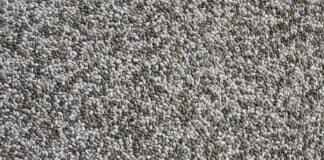When it comes to ensuring a clear view while driving, windshield wipers play a crucial role. This article delves into the top windshield wipers available on the market, providing valuable insights into their features, benefits, and essential considerations for selecting the best options for your vehicle.
Understanding the key features of windshield wipers is essential for making an informed purchase. Here are some factors to consider:
- Material: The rubber quality affects durability and performance. Look for wipers made from high-quality rubber or silicone.
- Size: Ensuring the correct size for your vehicle is vital for optimal performance.
- Type: Different types of wipers serve various purposes, which we will explore further.
Different types of windshield wipers serve various purposes. Here, we break down the most common types:
- Frame-Style Wipers: These traditional wipers are affordable and durable.
- Beam-Style Wipers: Engineered for improved performance, especially in adverse weather conditions.
- Hybrid Wipers: Combining the best features of both frame and beam styles.
Frame-style wipers have been a long-standing choice for many drivers. They offer advantages such as:
- Durability: Known for their robust construction, they can withstand various weather conditions.
- Cost-Effectiveness: Generally less expensive, making them accessible for budget-conscious consumers.
However, they also come with disadvantages, such as:
- Performance in Harsh Weather: They may struggle with ice and snow accumulation, affecting visibility.
Beam-style wipers are increasingly popular due to their design, which offers better contact with the windshield. Their benefits include:
- Flexibility: They conform better to the curvature of the windshield, providing a cleaner wipe.
- Performance in Rain: They tend to perform better in heavy rain and during high-speed driving.
Selecting the correct size for your windshield wipers is crucial. Here’s how to ensure you get it right:
- Measuring Your Windshield Wipers: Use a measuring tape to determine the length of your existing wipers. Accurate measurement ensures optimal performance.
- Consulting Size Guides: Many manufacturers provide size guides that can help you choose the right wipers for your vehicle. Check reliable resources online or consult your vehicle’s manual.
In conclusion, choosing the best windshield wipers involves understanding the various types, their features, and how to properly measure for the right fit. By considering these factors, you can enhance your driving safety and visibility, ensuring a smoother and safer ride in all weather conditions.

What Should You Look for in Windshield Wipers?
When it comes to maintaining your vehicle, windshield wipers are often overlooked, yet they play a crucial role in ensuring clear visibility during adverse weather conditions. Understanding the key features of windshield wipers is essential for making an informed purchase. This section discusses the materials, sizes, and types of wipers to consider, allowing you to choose the best option for your vehicle.
Windshield wipers are typically made from various materials, each offering different benefits:
- Rubber: This is the most common material, providing effective wiping performance and flexibility. It is usually the most affordable option.
- Silicone: Known for its durability, silicone wipers last longer and resist wear from UV rays and extreme temperatures. They are often more expensive but worth the investment.
- Graphite-coated: These wipers feature a layer of graphite that helps reduce friction, resulting in quieter operation and smoother performance.
Selecting the correct size for your windshield wipers is crucial to ensure optimal functionality. Follow these steps:
- Check your owner’s manual: Most vehicle manuals provide specific sizes for windshield wipers.
- Measure existing wipers: If you are replacing old wipers, measure the length from end to end for an accurate size.
- Use online size guides: Many manufacturers offer online tools to help you find the right size based on your vehicle make and model.
Different types of windshield wipers serve various purposes. Here’s a breakdown of the most common types:
- Frame-style wipers: Traditional and reliable, these wipers consist of a metal frame that holds the rubber blade. They are affordable and easy to replace.
- Beam-style wipers: These wipers are designed without a frame and provide a more uniform pressure across the windshield. They perform better in extreme weather conditions.
- Hybrid wipers: Combining features of both frame and beam wipers, hybrids offer the best of both worlds, providing flexibility and durability.
The design of windshield wipers affects their performance significantly. Here are some design aspects to consider:
- Aerodynamics: Wipers designed to minimize wind lift will perform better at high speeds.
- Pressure distribution: Wipers that ensure even pressure across the blade will provide a clearer wipe and reduce streaking.
- Ease of installation: Look for wipers that are easy to install, as this will save you time and hassle during replacement.
In summary, understanding the key features of windshield wipers—such as materials, sizes, and types—can help you make a more informed decision when purchasing. By considering these factors, you can select the best wipers that meet your needs and ensure a clear view of the road ahead.

Types of Windshield Wipers: Which One is Right for You?
Choosing the right windshield wipers is essential for maintaining visibility and safety while driving. With various options available, understanding the differences can significantly enhance your driving experience. In this section, we will explore the most common types of windshield wipers, including traditional frame-style, beam-style, and hybrid wipers, to help you make an informed decision.
- Traditional Frame-Style Wipers: These are the classic wipers that many drivers are familiar with. They consist of a metal frame that supports the rubber blade.
- Advantages: They are generally affordable and easy to replace, making them a popular choice for budget-conscious consumers.
- Disadvantages: However, they can struggle with ice and snow, potentially compromising visibility in severe weather conditions.
- Beam-Style Wipers: Designed for enhanced performance, beam-style wipers feature a sleek, aerodynamic design without a traditional frame.
- Advantages: They provide better contact with the windshield, allowing for improved clearing of rain and debris. Their flexible design helps them adapt to the curvature of the windshield.
- Disadvantages: The initial cost can be higher than frame-style wipers, which may deter some buyers.
- Hybrid Wipers: Combining the best features of both frame-style and beam-style wipers, hybrid wipers offer a unique solution.
- Advantages: They provide the stability of a frame with the performance benefits of a beam design, making them effective in various weather conditions.
- Disadvantages: Similar to beam-style wipers, they can be pricier than traditional options.
When selecting windshield wipers, consider factors such as your local climate, driving habits, and budget. For instance, if you frequently drive in areas with heavy precipitation, beam-style or hybrid wipers may be worth the investment for improved performance. On the other hand, if you are looking for a cost-effective solution for occasional rain, traditional frame-style wipers could suffice.
Additionally, it is crucial to check your vehicle’s specifications to ensure compatibility with the wipers you choose. Most manufacturers provide detailed size guides that can help you find the right fit, ensuring optimal performance.
In summary, understanding the different types of windshield wipers and their respective advantages and disadvantages is key to making an informed choice. Whether you prioritize cost, performance, or adaptability, there is a windshield wiper type that fits your needs perfectly.
Frame-Style Wipers: Are They Still Relevant?
Frame-style wipers have long been a staple in the automotive industry, known for their durability and affordability. However, as technology evolves, many consumers are left wondering: Are frame-style wipers still relevant in today’s market? This section delves into the advantages and disadvantages of these traditional wipers, comparing them to their modern counterparts.
- Durability: Frame-style wipers are built with a sturdy metal frame that provides excellent support, making them less prone to bending or breaking under pressure.
- Affordability: Generally, these wipers are less expensive than their beam-style and hybrid counterparts, making them an attractive option for budget-conscious drivers.
- Ease of Replacement: The design of frame-style wipers allows for straightforward installation and replacement, which is often a DIY-friendly task.
- Widely Available: Due to their popularity, frame-style wipers are readily available at most auto parts stores, ensuring that you can easily find the size and model you need.
- Performance in Extreme Weather: One of the significant drawbacks of frame-style wipers is their performance in severe weather conditions. They can struggle with snow and ice accumulation, which may hinder visibility during winter months.
- Less Aerodynamic: Compared to beam-style wipers, frame-style wipers are generally less aerodynamic. This can lead to increased wind lift at high speeds, causing the blades to lift off the windshield.
- Noise Levels: Some users report that frame-style wipers can be noisier than their modern counterparts, especially when the rubber blades start to wear out.
While frame-style wipers are versatile and can fit a variety of vehicles, they may not be the best choice for every car model. For instance, vehicles that experience heavy snow or ice may benefit from the advanced design of beam-style wipers, which offer better contact with the windshield. It’s essential to consider your driving conditions and vehicle type when selecting wipers.
When comparing frame-style wipers to beam-style and hybrid options, it becomes evident that each type has its strengths. Beam-style wipers, for instance, are designed to provide a more even pressure distribution across the windshield, which enhances visibility in adverse weather conditions. Hybrid wipers combine features from both styles, offering the durability of a frame with the performance of a beam design. However, these benefits often come at a higher price point.
In conclusion, while frame-style wipers remain a reliable and cost-effective choice for many drivers, it’s crucial to weigh their advantages against the specific needs of your vehicle and driving conditions. Understanding the unique features of each wiper type can help you make an informed decision that enhances your safety and driving experience.
Advantages of Frame-Style Wipers
When it comes to windshield wipers, frame-style wipers have long been a staple in the automotive industry. Their design has stood the test of time, and they continue to be a popular choice among drivers for several reasons. In this section, we will explore the advantages of frame-style wipers, highlighting their key features and why they might be the right choice for you.
- Durability: One of the most significant advantages of frame-style wipers is their robust construction. Made with a sturdy frame and durable rubber blades, these wipers are designed to withstand various weather conditions, including heavy rain and wind.
- Ease of Replacement: Frame-style wipers are designed for straightforward installation. Most drivers can replace them without the need for professional assistance, saving both time and money. This ease of use is particularly appealing to those who prefer to handle basic maintenance tasks themselves.
- Cost-Effectiveness: Generally, frame-style wipers are less expensive than their beam-style counterparts. This affordability makes them an attractive option for budget-conscious consumers who still want reliable performance from their wipers.
- Availability: Due to their long-standing popularity, frame-style wipers are widely available in various sizes and brands. This accessibility means that drivers can easily find replacements that fit their specific vehicle models.
- Variety of Blades: Frame-style wipers come in a variety of blade types, including those designed for specific weather conditions. Whether you need a blade that performs well in rain or one that can handle snow and ice, there’s likely a frame-style option available.
While frame-style wipers have many advantages, it is essential to consider their limitations as well. For instance, they may not perform as well as beam-style wipers in extreme weather conditions, particularly in heavy snow or ice. However, for many drivers, their benefits far outweigh these drawbacks.
In summary, frame-style wipers offer a combination of durability, affordability, and ease of use that makes them a practical choice for many vehicle owners. Whether you are looking for a reliable replacement or simply want to save on costs, frame-style wipers are worth considering.
Disadvantages of Frame-Style Wipers
When considering windshield wipers, it’s crucial to evaluate their performance in various weather conditions. One common type, frame-style wipers, has long been favored for their durability and affordability. However, they come with notable drawbacks, particularly in challenging weather scenarios.
Struggles with Ice and Snow Accumulation
One of the primary disadvantages of frame-style wipers is their tendency to struggle with ice and snow accumulation. Unlike their beam-style counterparts, which feature a more flexible design, frame-style wipers can become easily obstructed when heavy snow or ice builds up. This can lead to a significant reduction in visibility, which is a critical safety concern for drivers.
Impact on Visibility
In harsh winter conditions, the accumulation of ice and snow on frame-style wipers can prevent them from making full contact with the windshield. This results in streaks and blind spots that can impair a driver’s ability to see clearly. When visibility is compromised, the risk of accidents increases, making it essential for drivers in snowy regions to consider alternatives.
Maintenance Challenges
Another challenge associated with frame-style wipers is their maintenance. The exposed metal components can be prone to rust and wear, especially when exposed to harsh winter conditions. This can lead to a shortened lifespan of the wipers, requiring more frequent replacements compared to other types. Additionally, the buildup of ice can cause the wiper arms to bend or malfunction, further complicating maintenance efforts.
Difficulty in Performance During Heavy Rain
While frame-style wipers can perform adequately in light rain, they often struggle during heavy downpours. The rigid structure can lead to inefficient water removal, as they may not conform to the windshield’s curvature as effectively as beam-style wipers. This can result in water pooling on the windshield, further impairing visibility.
Conclusion
In summary, while frame-style wipers offer certain advantages, such as cost-effectiveness and ease of replacement, their limitations in icy and snowy conditions cannot be overlooked. For those living in areas that experience harsh winters or frequent rain, it may be prudent to explore other options, such as beam-style or hybrid wipers, which can provide enhanced performance and safety.
Beam-Style Wipers: Are They Worth the Investment?
Beam-style wipers have rapidly gained popularity among vehicle owners due to their advanced design and superior performance compared to traditional wipers. Engineered with a sleek, frameless structure, these wipers provide better contact with the windshield, ensuring a cleaner and more efficient wipe. This section delves into the numerous benefits of beam-style wipers, especially when faced with adverse weather conditions.
One of the most significant advantages of beam-style wipers is their flexibility. Unlike traditional frame-style wipers that may struggle to maintain contact on curved windshields, beam wipers conform to the surface of the glass. This feature is particularly beneficial during heavy rain or snow, as it allows for a more thorough clearing of water and debris.
- Superior Visibility: Beam-style wipers excel in removing rain, snow, and ice, providing drivers with optimal visibility.
- Less Noise: The aerodynamic design minimizes wind lift, resulting in quieter operation compared to traditional wipers.
- Durability: Made from high-quality materials, beam wipers are often more resistant to wear and tear, extending their lifespan.
Yes, beam-style wipers are generally designed for easy installation. Most models come with a universal fit feature that allows them to be easily attached to various wiper arms. This user-friendly aspect means that even those with limited mechanical skills can replace their wipers without professional assistance.
While beam-style wipers may come at a higher initial cost compared to traditional frame-style wipers, the long-term benefits often justify the investment. Their enhanced performance, durability, and ability to provide a clearer view in challenging weather conditions can lead to improved safety on the road. Additionally, the reduced need for frequent replacements can save money over time.
In summary, beam-style wipers offer numerous advantages that make them a worthy investment for any vehicle owner. Their superior performance in adverse weather conditions, ease of installation, and long-lasting durability contribute to a safer driving experience. When considering windshield wipers, it’s essential to evaluate your specific needs and the typical weather conditions in your area. Opting for beam-style wipers could significantly enhance your visibility and overall driving safety.

How to Choose the Right Size for Your Vehicle?
Choosing the right size for your windshield wipers is essential for ensuring optimal visibility and safety while driving. If your wipers are too long or too short, they may not clear the windshield effectively, leading to potential hazards in adverse weather conditions. This section provides a comprehensive guide on how to measure your wipers accurately and where to locate size guides for different vehicle models.
Accurate measurement of your windshield wipers is crucial for achieving the best performance. Here are the steps to measure your existing wipers:
- Step 1: Lift the wiper arm away from the windshield.
- Step 2: Measure the length of the wiper blade from end to end using a measuring tape.
- Step 3: Note the size in inches, as this will be essential for selecting the correct replacement.
By following these steps, you can ensure that you purchase the correct size wipers, which will fit perfectly and function effectively.
Many manufacturers provide detailed size guides that can assist you in selecting the appropriate wipers for your vehicle. Here are some reliable resources:
- Manufacturer Websites: Most car manufacturers have size guides available on their official websites. Simply enter your vehicle’s make, model, and year to find the correct wiper sizes.
- Auto Parts Retailers: Websites of auto parts retailers often feature wiper size lookup tools. You can search by vehicle specifications to find compatible wipers.
- Owner’s Manual: Your vehicle’s owner’s manual typically includes information on the correct wiper sizes. Refer to this resource for accurate details.
Opting for the incorrect size can lead to several issues, including:
- Inadequate Coverage: Wipers that are too short may not cover the entire windshield, leaving blind spots.
- Increased Wear: Wipers that are too long can cause strain on the wiper motor and may wear out more quickly.
- Noise and Vibration: Incorrectly sized wipers can result in noisy operation and vibrations, which can be distracting while driving.
In summary, selecting the right size for your windshield wipers is a straightforward process that involves measuring your existing wipers and consulting reliable size guides. By taking these steps, you can enhance your driving experience and maintain safety on the road.
Measuring Your Windshield Wipers
When it comes to ensuring the safety and visibility of your driving experience, properly functioning windshield wipers are essential. A crucial part of maintaining your vehicle, these components must be the right size for optimal performance. In this guide, we will delve into the importance of accurate measurement and provide you with a comprehensive, step-by-step approach to measuring your existing wipers for a perfect fit.
Using the correct size windshield wipers is vital for several reasons. Firstly, improperly sized wipers can lead to streaking or missed spots, compromising your visibility during rain or snow. Secondly, wipers that are too long or too short can put unnecessary strain on the motor, leading to premature wear or even failure. Therefore, taking the time to measure your wipers correctly ensures optimal performance and longevity.
Follow these easy steps to measure your windshield wipers accurately:
- Gather Your Tools: You will need a measuring tape or a ruler for this task.
- Lift the Wiper Arm: Carefully lift the wiper arm away from the windshield until it locks in place.
- Measure the Blade Length: Using your measuring tape, measure the length of the wiper blade from one end to the other. Ensure you measure the actual blade, not the entire arm.
- Check the Size: Note the size you measured. It’s often expressed in inches.
- Repeat for the Other Wiper: If your vehicle has two wipers, repeat the measurement for the other side, as they may differ in size.
Once you have your measurements, the next step is to find the right replacement wipers. Many manufacturers provide size guides that can help you choose the correct wipers for your vehicle. You can typically find these guides on:
- Manufacturer Websites: Most car manufacturers have detailed specifications for replacement parts.
- Retailer Websites: Online auto parts retailers often have tools that allow you to input your vehicle’s make and model to find the correct wiper size.
- Owner’s Manual: Your vehicle’s owner manual usually includes specifications for wiper sizes.
In addition to these resources, many auto parts stores have knowledgeable staff who can assist you in selecting the right size based on your measurements.
When measuring your windshield wipers, avoid these common pitfalls:
- Ignoring the Arm Length: Sometimes, people mistakenly measure the length of the wiper arm instead of the blade.
- Assuming Both Wipers Are the Same Size: Always measure both wipers, as they can vary significantly.
- Forgetting to Check Compatibility: Ensure that the wipers you choose are compatible with your vehicle’s make and model.
By following these guidelines, you can confidently measure your windshield wipers and select the perfect replacements. Remember, accurate measurement is key to ensuring your wipers function effectively, enhancing your visibility and safety on the road.
Consulting Size Guides: Where to Find Them?
When it comes to selecting the right windshield wipers for your vehicle, one of the most crucial steps is ensuring you have the correct size. Consulting size guides can be incredibly helpful in this process. Many manufacturers offer detailed size charts that can assist you in finding the perfect fit for your specific vehicle model.
First and foremost, it’s essential to understand that windshield wipers come in various sizes, and using the wrong size can lead to ineffective cleaning and potential damage to your windshield. To avoid this, you can refer to the following reliable resources:
- Manufacturer Websites: Most automotive manufacturers provide size guides on their official websites. These guides typically list compatible wiper sizes for each vehicle model, making it easy to find the right match.
- Auto Parts Retailers: Websites of auto parts stores often feature size lookup tools. By entering your vehicle’s make, model, and year, you can quickly find the recommended wiper sizes.
- Owner’s Manual: Your vehicle’s owner manual is another excellent resource for determining the correct wiper sizes. It usually includes specifications for all parts, including windshield wipers.
- Online Forums and Communities: Automotive forums can be valuable for real-world advice and experiences. Many users share their recommendations on wiper sizes that work best for different models.
- Mobile Apps: There are several mobile applications available that can help you find the right wipers by scanning your vehicle’s VIN or entering specific vehicle details.
Before making a purchase, always double-check the size against multiple sources to ensure accuracy. Remember, even slight variations in size can affect the performance of your wipers, especially in adverse weather conditions. For example, if your wipers are too short, they might not clear enough surface area, while overly long wipers could interfere with your vehicle’s operation.
In addition to size, consider the type of wiper you need. Different types of wipers, such as beam-style or frame-style, may have specific size requirements. Therefore, understanding both the size and type will help you make a more informed decision.
In conclusion, consulting size guides is an essential step in choosing the right windshield wipers. By utilizing the resources mentioned above, you can ensure that you find the perfect fit for your vehicle, enhancing both safety and visibility on the road.
Frequently Asked Questions
- What is the best type of windshield wiper for my vehicle?
The best type of windshield wiper depends on your driving conditions and preferences. If you often face harsh weather, beam-style wipers are great for flexibility and performance. For budget-friendly options, frame-style wipers still hold their ground.
- How do I know what size windshield wipers I need?
To find the right size, you can measure your existing wipers from end to end. Alternatively, most manufacturers provide handy size guides on their websites, so you can easily find the perfect fit for your vehicle.
- How often should I replace my windshield wipers?
It’s generally recommended to replace your windshield wipers every 6 to 12 months. However, if you notice streaking or skipping, it’s time for a change, regardless of the timeline!
- Can I install windshield wipers myself?
Absolutely! Installing windshield wipers is usually a straightforward process that you can do in just a few minutes. Most wipers come with clear instructions, making it a DIY task that saves you time and money.
- What should I do if my wipers freeze to the windshield?
If your wipers freeze, avoid turning them on, as this can damage the motor. Instead, gently thaw them with warm water or a de-icer. Always ensure they are free before using them to maintain optimal performance.














